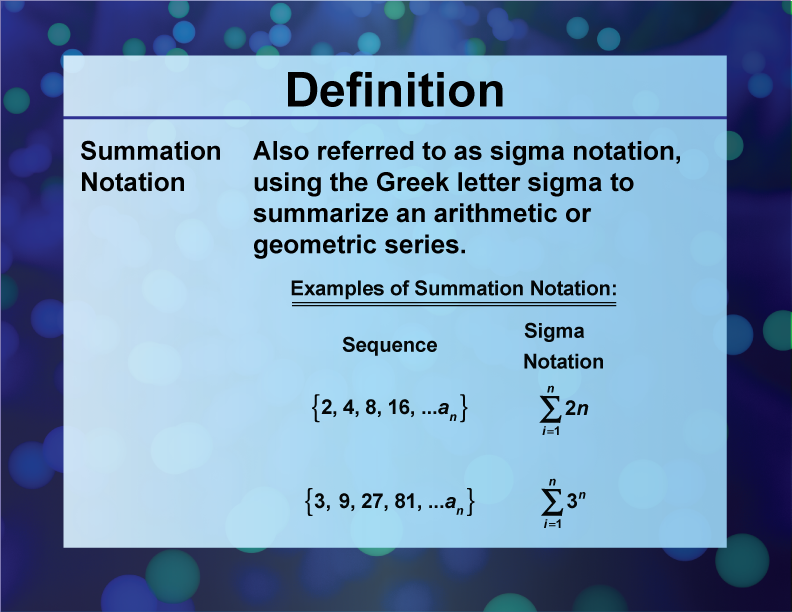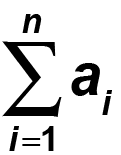
Display Title
Definition--Sequences and Series Concepts--Summation Notation
Display Title
Summation Notation

Topic
Sequences and Series
Definition
Summation notation is a mathematical notation used to represent the sum of a sequence of terms.
Description
Summation notation is a powerful tool in mathematics, representing the sum of a sequence of terms in a compact form. This concept is essential in various mathematical and scientific applications, including calculus, statistics, and computer science.
In real-world applications, summation notation is used in statistical analysis to represent the sum of data points. It is also used in financial calculations to determine the total amount of payments or investments. Algebraically, summation notation is represented by the Greek letter sigma (Σ) and can be expressed as

where ai are the terms of the sequence.
Understanding summation notation is crucial for math education as it helps students develop skills in recognizing and analyzing sums of sequences. It provides a foundation for more advanced topics in calculus and statistics, and aids in developing problem-solving skills.
For a complete collection of terms related to sequences and series click on this link: Sequences and Series Collection
| Common Core Standards | CCSS.MATH.CONTENT.6.SP.B.4, CCSS.MATH.CONTENT.HSF.IF.A.3, CCSS.MATH.CONTENT.HSF.BF.A.2, CCSS.Math.CONTENT.HSF.LE.A.2 |
|---|---|
| Grade Range | 6 - 9 |
| Curriculum Nodes |
Algebra • Sequences and Series • Series |
| Copyright Year | 2021 |
| Keywords | data analysis, arithmetic sequence, common difference, definitions, glossary terms, geometric sequence, common ratio |